 We think teachers are among the most generous people on earth. Not only do teachers give of their time and talents during the school day, they volunteer as coaches and club leaders after school and on weekends, just because they love kids and want to help. Most teachers we know also dip into their own pockets to buy items for their classrooms; in fact, research shows that teachers spend about $500 a year of their own money on supplies and curriculum that they know their students need and their school won’t buy.  There’s a better way to find that extra money for your students: apply for a grant. There are many opportunities for funding curriculum. One of the most common questions we receive from teachers is, “How can I find the funds to purchase Brick Math for my classroom?” If you want to bring Brick Math to your classroom or school, we suggest several possible sources of funding that other teachers have used: • Title 1 Grants: These grants are available from the federal government based on school populations of low income students. We have seen a big uptick in schools ordering the Brick Math curriculum using Title 1 funds. Many schools tell us they plan to use Brick Math for intervention, to help struggling students learn basic K-8 math. Since Title 1 funds are intended to be supplementary to state and local funding, schools often use them to purchase additional curriculum to help students when more traditional methods haven’t worked. Brick Math is perfect for that purpose. • Teacher discretionary funds: In many schools, teachers receive a stipend to pay for classroom amenities and/or curriculum. Many teachers have purchased Brick Math with their discretionary funds to test the program in their own classrooms. • PTA funding – Often, Parent-Teacher groups offer money to fund new programs that teachers want their students to try. Check with your school’s PTA or PTO to see if they can help purchase Brick Math for your classroom or school. • Third-party grant programs: Generous non-profit foundations offer grants to fund curriculum like Brick Math. Many focus on STEM-related curriculum materials, and their awards range from a few hundred dollars to $50,000 or more. Look at smaller individual grants if you’re trying to fund Brick Math for your classroom, and check out larger grant programs if your school wants to bring in Brick Math on a larger scale.  Thousands of schools around the world utilize Brick Math to help students “see” the math in the K-8 curriculum by modeling with LEGO®-compatible bricks. The 13 math subjects in Brick Math range from Counting to Pre-Algebra. Brick Math is a different approach to teaching math; the lessons utilize LEGO® bricks as manipulatives, and students model the math as they learn. For students whose learning style is hands-on, Brick Math is the research-based teaching solution that teachers and schools have been looking for. And what’s more fun than learning with LEGO® bricks?!
0 Comments
 Brick Math is proud to announce our brand-new 7th - 8th grade content with two new subjects added to the curriculum: Pre-Algebra and Data and Statistics. As with all the Brick Math curriculum, the content is taught by modeling the math with LEGO® or LEGO®-compatible bricks, giving students a hands-on experience that helps them gain deep understanding of the mathematical concepts. Each subject has a Teacher Edition that guides the teacher through the step-by-step lessons as well as a Student Edition that is a workbook for students to draw their brick models and includes student assessments for every chapter. The Brick Math brick set works for these new subjects, too.  The new content extends Brick Math to a complete K - 8 curriculum solution for schools as well as for homeschooling. Brick Math is ideally suited for students who haven’t been able to learn the concepts through more traditional methods.  In Pre-Algebra, students are introduced to topics that help them prepare for high school math. These include integers, fractions, square roots, step equations, linear equations, and decimals. Students learn how to solve basic equations using variables. Modeling with bricks, students engage in problem-solving activities that expand their knowledge of: • absolute value and positive/negative numbers • exponents, including negative exponents and multiplicative inverse • rules of integers • algebraic expressions • equations and inequalities • slope  In Data and Statistics, students learn the basics of representing and interpreting data with line plots, bar graphs, histograms, and box plots. They learn how to measure central tendency through mean, median, mode, and range. Then students move on to learn about coordinates, line graphs, and scatter plots. Finally, they learn how to graph and calculate the slope of a line. The final chapter is an introduction to both theoretical and experimental probability. Modeling with bricks, students engage in problem-solving activities that expand their knowledge of: • visual models and graphs of data sets • measures of central tendency • coordinate grids • slope • theoretical and experimental probability Both books progress through these topics in modules, moving from more basic to more complex in each chapter. Most students learn these Pre-Algebra and Data and Statistics topics in grades 7 - 8. We have had so many requests to extend the Brick Math program through eighth grade, and it’s finally here! We’re excited to share the new Brick Math content with you. Brick Math is a K-8 math curriculum that uses LEGO® bricks to model 13 different math subjects:
Counting, Addition, Subtraction, Multiplication, Division, Basic Fractions, Basic Measurement, Fraction Multiplication, Fraction Division, Advanced Measurement and Geometry, Decimals, Data and Statistics, and Pre-Algebra. Brick Math works in many applications: for homeschooling, math intervention, enrichment, and as a whole-school program. Materials are simple and affordable. If you are a math teacher or a parent with a student at home who is learning K-8th grade math, check brickmath.com. The website includes videos for both teacher training and direct instruction of students. You can learn more about how Brick Math improves students' math test scores and hear what people who are using Brick Math have to say about the program.  This is the time of year schools start planning for their summer programs. We’ve been busy lately, responding to school districts planning to use the Brick Math curriculum this summer.  Brick Math is the perfect way to engage struggling students in math summer school. Naturally, students enjoy using the bricks as math manipulatives. But even more importantly, Brick Math is a modular program that targets specific math skills. Students learn using different methods than other math programs, and experience shows that they respond very positively to the hands-on program.  Brick Math offers free curricula of summer programs for each of the 11 subject areas for schools who choose Brick Math as their summer school curriculum. These programs can be easily adapted to your school’s schedule. To view a sample of Brick Math’s summer program, click here. The sample shows Day 1 of a 12-day summer program for Basic Fractions.  The 11 Brick Math topics include: Brick Math has been shown to increase students’ test scores significantly. Students gain a real understanding of the reasons why behind the math when they learn with Brick Math.
Please call 802-751-8002 or email us if you'd like to learn more about how to use Brick Math in your school's summer program.  There are a number of recent research studies that assess the effects of online and hybrid learning during the past three pandemic-affected school years. The studies show that math scores have dropped considerably during this time, even more than reading. According to an Education Week article, students are 12 weeks behind where they should be in math – about four months, or one-third of a typical 36-week school year. 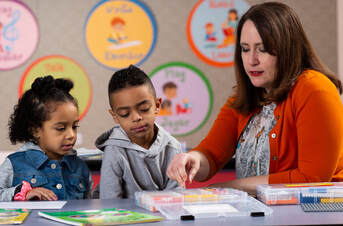 There is a lot of federal funding available for academic intervention and support to help kids catch up. Many experts recommend a multi-pronged approach to helping students get back on track: tutoring, after-school programs, summer school, and/or lengthening the school year. 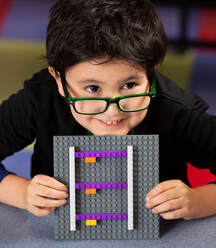 Brick Math is a very effective curriculum for math intervention and support in grades K – 6. The program teaches basic math by modeling with LEGO bricks, so the process is tactile, easy to understand, and fun! Brick Math is designed to work in different settings: whole-class, small group, and one-on-one. It is simple to adopt in any of the support approaches a school chooses, as a tutoring curriculum, or part of an after-school or summer program. 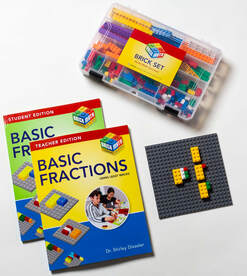 Recommendations also include the need for schools to implement their intervention strategies as soon as possible, and the funding timeline will help reinforce a speedy plan: schools have only two years to spend the money allocated to help students catch up. That's another plus for Brick Math -- the brick modeling techniques are easy for teachers to learn. There are only a few materials needed: a lesson book for the teacher, a student workbook for each student, and a brick set for every one or two students using the program. As schools try to get back to "normal" this year, the Brick Math curriculum can help bring your students back where they should be in math.  Brick Math is a K-6 math curriculum that uses LEGO® bricks to model 11 different math subjects: Counting, Addition, Subtraction, Multiplication, Division, Basic Fractions, Basic Measurement, Fraction Multiplication, Fraction Division, Advanced Measurement and Geometry, and Decimals. It works for homeschooling, math intervention, enrichment, and as a whole-school program. Materials are simple and affordable. If you teach math or have a student at home who is learning K - 6th grade math, check brickmath.com. The website includes videos for both teacher training and direct instruction of students. You can learn more about how Brick Math improves students' math test scores and hear what people who are using Brick Math have to say about the program.  During the pandemic, the math skills of many elementary school students have dropped significantly. In the coming school year, educators are faced with the challenge of helping students both regain skills and learn new material. The latest thinking on how to help students who have lost math skills during the COVID year is to accelerate instruction rather than hold back. Guidance from the US Department of Education is to move ahead with grade-level math instruction, but include new strategies for learning where students show deficits.  Brick Math is the perfect solution for teachers and schools looking for a way to help students whose math skills have faltered in the past year. The K – 6th grade program uses LEGO bricks to model math, an innovative approach that helps students quickly learn mathematic basics that range from Counting through Advanced Geometry. Since the program is modular, it can be brought in to address specific learning deficits a student may have. For example, if a teacher finds that a student missed out on learning decimals last year, the Brick Math program of instruction for Decimals will help that student move back up to grade level work quickly.  Here’s how Brick Math can help a student who has lost math skills over the past year: 1. Determine what area of math the student is having trouble with (for example, understanding decimals). 2. Bring in the Brick Math subject area as needed (in the example, use the methods in the Decimals Teacher and Student books). The program focuses on helping the student quickly understand and master the topic. 3. Now the student is ready to rejoin the whole class in grade-level math. Brick Math is a K-6 math curriculum that uses LEGO® bricks to model 11 different math subjects: Counting, Addition, Subtraction, Multiplication, Division, Basic Fractions, Basic Measurement, Fraction Multiplication, Fraction Division, Advanced Measurement and Geometry, and Decimals. It works well for homeschooling, math intervention, enrichment, and as a whole-school program. Materials are simple and affordable.
If you teach math or have a student at home who is learning math, check brickmath.com. The website includes videos for both teacher training and direct instruction of students. You can learn more about how Brick Math improves student math test scores and hear what people who are using Brick Math have to say about the program.  It’s great to see that schools are in gear again, assessing new curriculum for the 2021-22 school year, and deciding to use Brick Math with their students! Schools in Tennessee, South Carolina, California, Pennsylvania, and North Carolina have recently added Brick Math to their K - 6 math curriculum. Administrators and teachers tell us why they have chosen Brick Math: Teaching Math Using LEGO® Bricks for the upcoming school year:  Reason # 1 – It works! The Brick Math program is a tried-and-tested method for learning K – 6 math for the past five years. Students “see” the math by building brick models. The Brick Math method helps students really understand the “why” behind the math by drawing the models they have created and explaining the process in words.  Reason # 2 – Brick Math allows teachers and students to focus on one subject at a time. Whether it’s Addition, Basic Fractions, Division, Measurement, Decimals or one of 11 different math topics, Brick Math helps students learn the math concepts they have haven’t grasped yet or leap ahead when they are ready. It can be taught in a small group or a whole classroom.  Reason # 3 – Schools, teachers, and parents love Brick Math because it helps students catch up on math they missed during the pandemic. Click here to learn more about how Brick Math can help students bring back the math skills they left behind during virtual or hybrid classes. 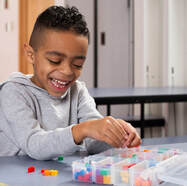 Reason # 4 – It’s fun! Who wouldn’t enjoy learning math when LEGO® bricks are involved? Brick Math is ready to help schools with a program that can accelerate students’ math skills. If your students have fallen behind in math, please visit BrickMath.com to find out more about how Brick Math can help your students recover from math learning losses over the past year. The website includes training videos, testing results, research findings, and much more.  We’re putting the 2020-2021 school year in the rear-view mirror and looking ahead to new resources for students as they go back to in-person learning. Students will need something extra to regain the math skills they’ve lost in the past school year. That’s why the 2021-2022 school year is “The Year of Brick Math”!  There’s never been a better time for Brick Math: Teaching Math Using LEGO Bricks. The innovative K – 6 math curriculum utilizes kid-friendly LEGO bricks to model math with direct, hands-on techniques that are easy to teach and fun to learn. The method is as far from Zoom screens and worksheets as it could be. The lessons are engaging and effective. Many students have lost significant ground in math during the past year. And parents are very concerned about their children’s lack of academic progress.  The Brick Math program can help strengthen students’ math skills. Any or all of the 11 different K – 6 math subjects can be added to an existing math program to help struggling students. Thousands of schools, teachers, and parents use Brick Math in various ways: as a complete math curriculum, for instruction in specific content areas, for remediation, in small-groups, or working one-on-one. Brick Math school programs can include professional development, coaching, and individual support for teachers.  Learning math with LEGO bricks is a proven method that gets powerful results. Research has shown that students who learn with Brick Math improve their test scores dramatically. Right now, students need innovative learning solutions that work. Brick Math is the solution to help students rebuild the math skills they have lost in the past year. Make 2021-22 your Year of Brick Math! Visit www.brickmath.com or call 802-751-8802 for more information. It’s been a tough year for schools and students, especially for math instruction. Many students have lost substantial math skills during this past school year because virtual learning is a poor substitute for in-class, hands-on learning. Research shows the deficits are far greater for math than for reading.  But there is a solution. Brick Math: Teaching Math Using LEGO Bricks is a program used by thousands of schools around the country to help K – 6 students catch up in math skills they desperately need. Brick Math has programs for schools to jump-start the math curriculum with specific, hands-on instruction in 11 math subjects. This proven program engages students with LEGO-compatible bricks to help students quickly gain back what they've lost and move ahead in their math skills. Brick Math programs can include professional development, coaching, and individual support for teachers. 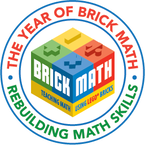 We’re calling the 2021-2022 school year “The Year of Brick Math,” because it’s the perfect curriculum to help K – 6 students rebuild their lost math skills. Brick Math uses LEGO bricks to model the math, which results in higher engagement with the lessons and deeper understanding of the math. Here’s why Brick Math works to bring students' math skills back to where they need to be: • Modular Components: The program is modular, so it can be brought in at whatever level students need to make up for the math they didn’t learn this past year. The K - 6 curriculum is divided into 11 different subject areas, starting with Counting and Cardinality in the earliest grades, and moving through Advanced Geometry and Measurement in grades 5 - 6. • No Screens Necessary! The hands-on nature of Brick Math is just right for screen-exhausted students. They build models of the math with their own set of bricks as they learn, and they utilize pencil and paper to draw the models and explain their thinking process. • Easy to Get Started Teaching techniques are easy to learn and straightforward. Professional development for implementation and periodic coaching of staff throughout the year are available to ensure that teachers are comfortable teaching with Brick Math. • Proven Results Research shows that students who learn with Brick Math improve their test scores dramatically. Learning math with LEGO bricks is a proven method that gets powerful results. Brick Math is the curriculum solution for schools that need to help students rebuild the math skills they have lost in the past year. Visit www.brickmath.com or call 802-751-8802 for more information.
 It’s an exciting time for American schools. Tomorrow President Biden will sign the COVID relief bill, which allocates $128 billion for state and local education. Twenty percent of those funds must address learning loss by students who have struggled to learn in virtual or hybrid settings. According to research, students have fallen far behind in math since March 2020, with much more severe learning losses in math than in reading. There are five key ways that a math curriculum can help students who have fallen behind in math:  1. Students have fallen behind in math at different rates and in different subjects. Brick Math is a modular program that allows students to catch up in any of 11 specific K-6 math areas (Counting and Cardinality through Advanced Measurement and Geometry). 2. As students move back to full-time classroom learning, teachers can now take advantage of teaching methods that work well in the classroom setting. Brick Math works especially well in a classroom environment because it is hands-on. Students build models of the math with LEGO bricks, and teachers can quickly scan the room to make sure students are correctly learning the concepts.  3. K – 6 math is often taught using small groups of students whose math skills are at the same level. Brick Math works well in small groups because teachers can target specific areas of learning needs and help students with quick adjustments. 4. Students learn math best through a variety of methods. With Brick Math, students think through problems under the guidance of the teacher. Then they build models of the math with bricks. They then draw their models and explain the math concept in writing. These steps help solidify students’ learning.  5. Research shows that kids learn more when they are engaged and stay longer on the task. With Brick Math, students have fun while they learn, so their level of engagement is high. Many teachers report that students ask for “more Brick Math,” even when it’s time to move on to another subject! Brick Math is ready to help schools with a program that can accelerate students’ math skills. If your students have fallen behind in math, please visit BrickMath.com to find out more about how Brick Math can help your students recover from math learning losses over the past year. The website includes training videos, testing results, research findings, and much more.  Many elementary schools are planning for a combination of in-school and online learning for the upcoming school year. But studies show that students have missed about half the math they should have learned this spring. It’s important that the math instructional methods for the fall carry through from the classroom to the home. Steven Blackburn, writing for District Administration, talks about two key needs for learning math: the use of manipulatives, and the ability for students to share their thinking with teachers and peers. He quotes Trena Wilkerson, president of the National Council of Teachers of Mathematics (NCTM): “Making math meaningful involves providing tasks and opportunities that allow students to engage in ways that make sense in their world to build upon whatever understanding they have at that moment to do meaningful work.” That’s how Brick Math works. Students build models with a familiar and fun manipulative, LEGO® bricks. Then they share their thinking about the math, both orally and in writing. Wilkerson is clear about the need for communication in math instruction: “There needs to be an open dialogue in learning just to ensure students are engaging with the mathematical principles and making sense of it in their world.” Schools can use the Brick Math curriculum and brick sets on site at school and also send brick sets and student workbooks home for students’ use there. Even students without Internet access can discuss their Brick Math work with teachers via phone or text. Whether in our new virtual classrooms or in real life, students need to learn along with the teacher, using a model to explain and describe the math. Dr. Shirley Disseler, author of the Brick Math curriculum, recently found that most parents of elementary students don’t feel qualified to work with their child in the area of math (23% of 250 respondents). In contrast, 65% felt they could help their child with reading tasks. For math, students need to see the teacher, hear the teacher, and work alongside the teacher whether online or in person. No matter how it is delivered, instruction must provide student engagement that is rooted in manipulative and hands-on work that is not solely worksheet and app based. Brick Math is a curriculum that helps students learn K-6 math in any learning environment. |
Categories
All
Archives
July 2024
|


